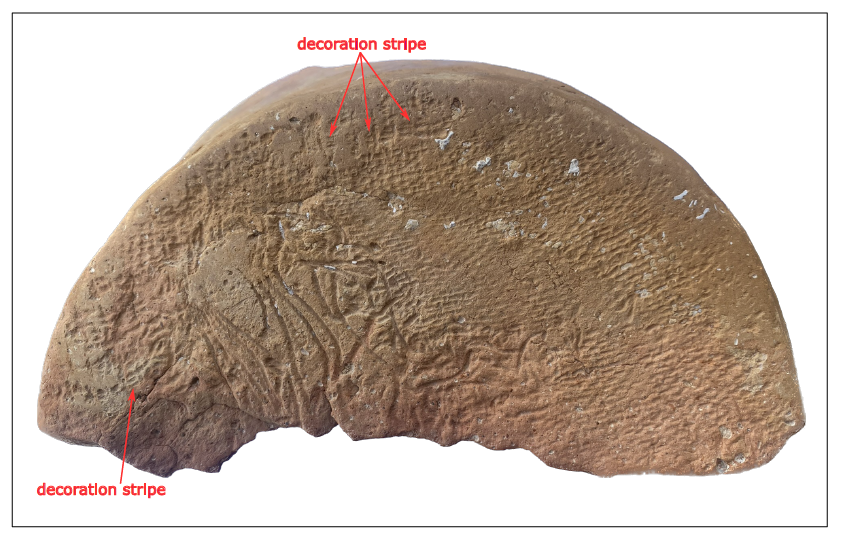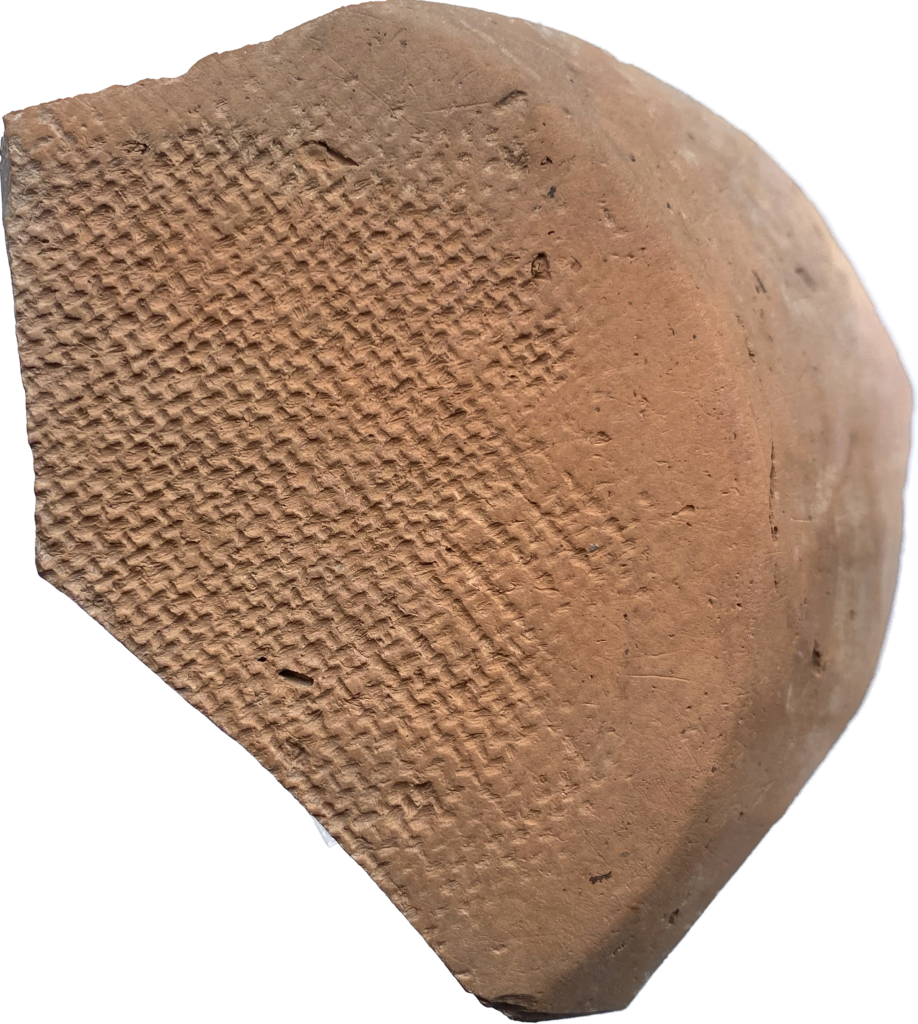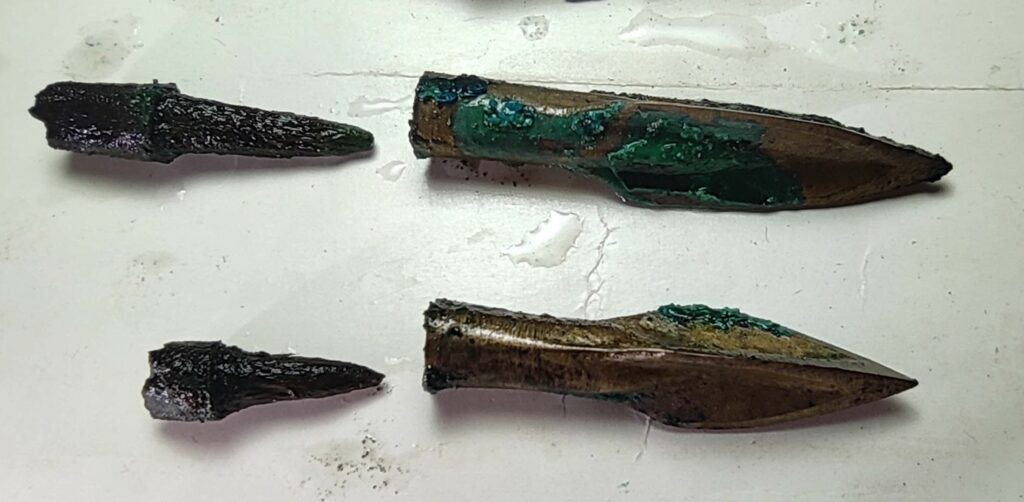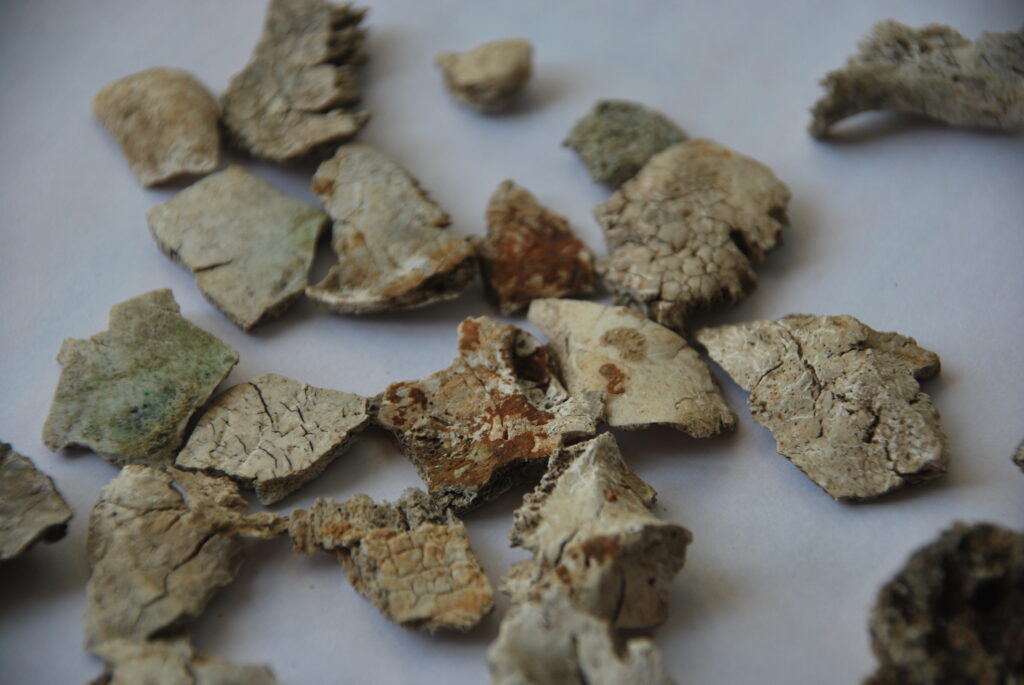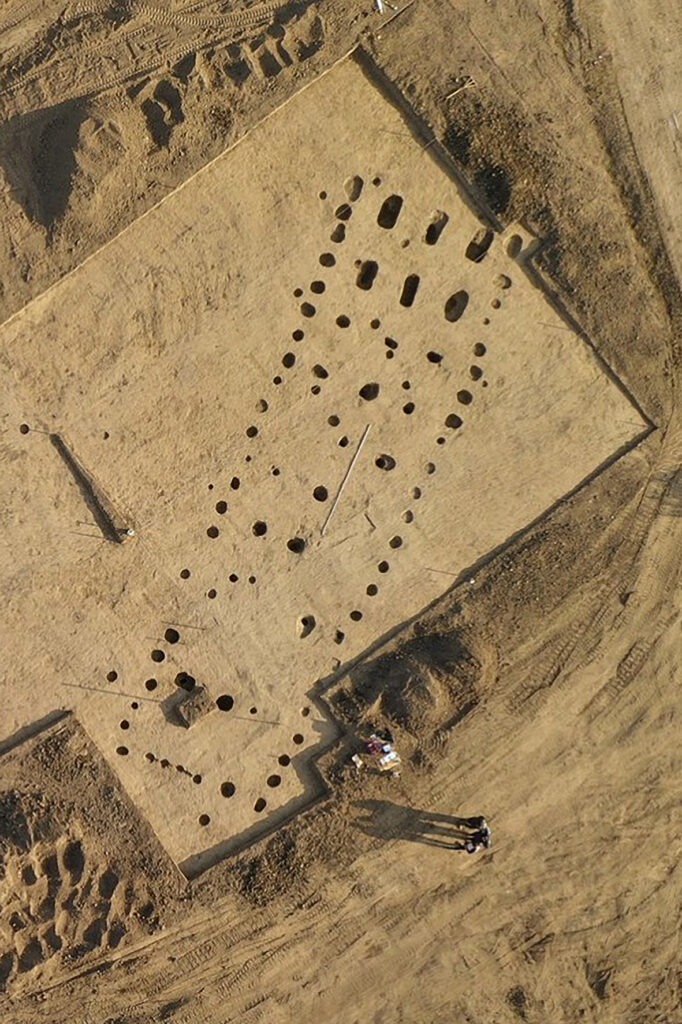This week we continue the discussion of prehistoric technologies started in the previous post and turn to the rich heritage of the Trypillia culture. Vitalii Rud is a senior researcher at the Institute of Archaeology of the National Academy of Sciences of Ukraine, Department of Eneolithic and Bronze Age Archaeology, and presents his DAI fellowship project on Eneolithic textile and pottery production.
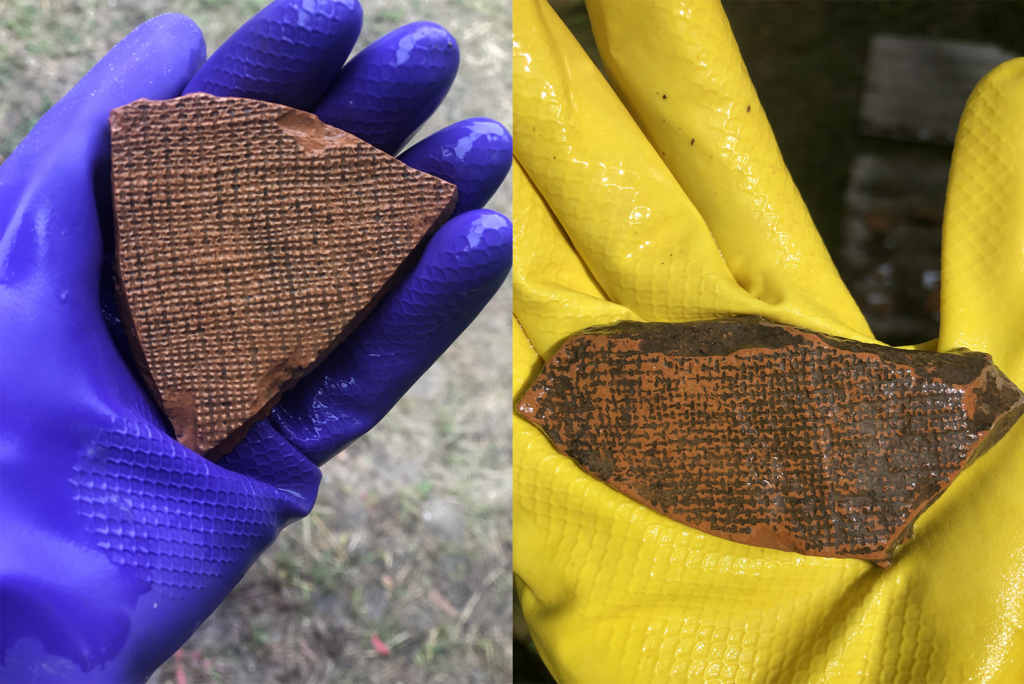
The main aim of my project is to process a special category of archaeological artifacts, namely the ceramic vessel bases with textile impressions, to characterize textile and ceramic production as aspects of the Cucuteni-Trypillia (CT) economy. Textile impressions on the CT ceramic vessels have been known since the first field archaeological investigations of this culture complex sites and belong to the category of rare finds.
During field campaigns of the last years, ceramics with textile impressions (Fig. 1) were found on the CT sites of the interfluve region between the middle reaches of the Dniester and Southern Bug Rivers in modern Ukraine. Field investigations were conducted mainly in collaboration of the Institute of archaeology (NAS of Ukraine, Kyiv) and Kiel University (CRC 1266: Scales of Transformation). These artifacts come from three sites, dated from the beginning to the middle of the 4th millennium BCE, which represent two chronological Trypillia stages. The CI stage materials come from the settlement of Bilyi Kamin (Fig. 2), that belongs to the period of the megasites phenomenon. And the CII stage materials represent the time after the collapse of the Trypillia megasites and come from the Kisnytsia and Krynychky-Ferma settlements. Visual examination of the impressions on the Bilyi Kamin pottery revealed the presence of decorated textiles. The weavers at Bilyi Kamin implemented weaving techniques to produce a special fabric relief with visual effect of structural patterning (Fig. 3).
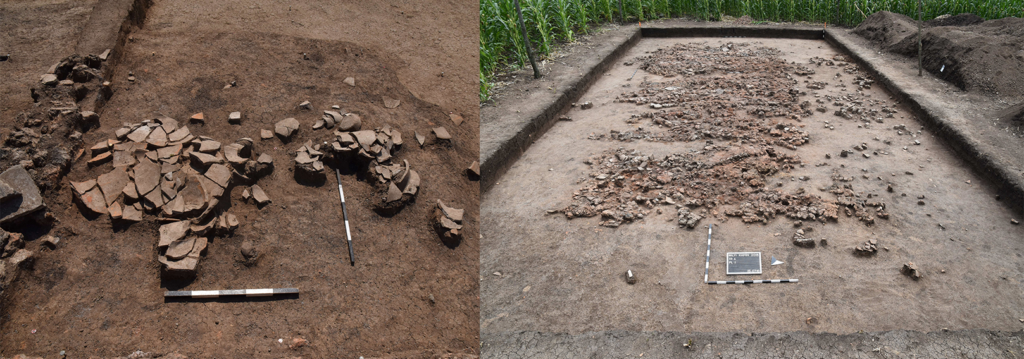
The uniqueness of this collection lies in its large quantity, which exceeds more than 50 fragments. Moreover, more than 40 fragments in this collection come from the Kisnytsia settlement (Fig. 4), which is the largest known collection of such artifacts within the CT area. The processing and publishing the finds from Kisnytsia will allow us to characterize in detail textile and ceramic production within one settlement.
An important aspect of the project is to conduct specialized microscopic analysis of the finds. Specifically, they will be analyzed using digital microscopes, which will allow us to investigate and reconstruct the weave, fiber, and thread structure of the textiles imprinted on the ceramic sherds. Experimental samples will also be created and analyzed.
Finally, the current characteristics and new interpretations of CT textile and ceramic production will be developed. Innovations and transformations within their chronological and geographical contexts, including a comparison with the key trends of the socio-economic development of the CT during the 4th millennium BCE will be highlighted.
Vitalii Rud
References
Rud et al. 2019: V. Rud/R. Hofmann/V. Kosakivskyi/O. Zaitseva/J. Müller, Trypillia megasites west of the River Southern Buh: Preliminary results of Bilyi Kamin site investigation in 2018. JNA 21, 2019, 27–60. DOI: https://doi.org/10.12766/jna.2019.2
